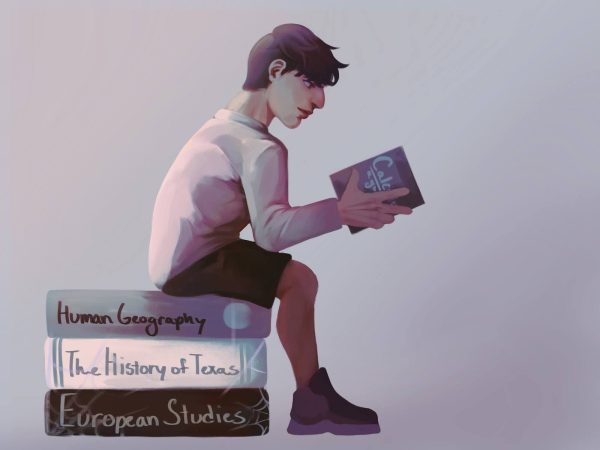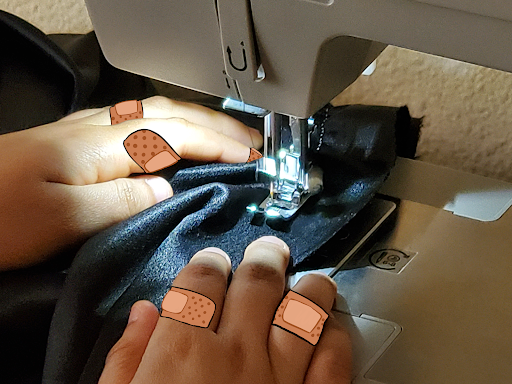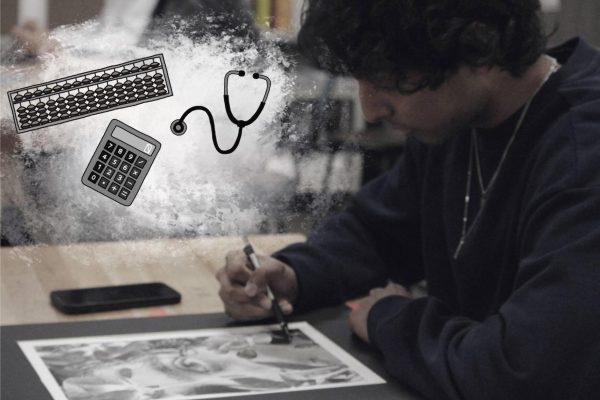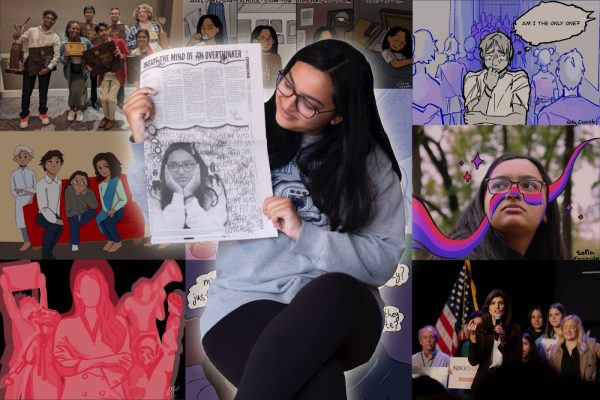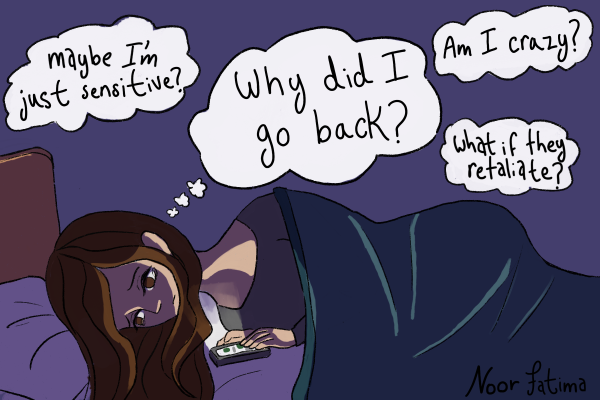2 Beliefs, 1 Nation
A Catholic’s journey to a temple

Staff Writers Meha Srivastav, a Hindu, and Briana Thomas, a Catholic exchanged their religions for a day and visited a temple and church together. This is an article about Thomas’s experience –
And for a brief moment, I was underwater.
My head immersed carefully into the lukewarm, hanna velam or holy water, that settled quietly in a golden bowl carved with intricate images depicting Jesus and his disciples. It was at this moment, as the congregation sang breathlessly the ancient hymns of the Holy Qurbana, that I, a small infant, was drawn out from the water, blessed with the sign of the cross, and baptized.
This newly received gift of supernatural life welcomed me graciously into my new home, for forever and eternity: The Syro Malabar Catholic Church.
Growing up, the struggle for cultural and religious identity was one of great difficulty. As a South Indian living in Texas, it was not uncommon for me to have to explain how it is even slightly possible, that I am indeed, a Catholic. Despite the vast, truly beautiful community of Syro-Malabar Catholics I grew up with – the complex integration of religion and culture, that was, is and will always be a part of me, never failed to leave me slightly perplexed, unable to fully grasp my true identity.
Kerala, India: Otherwise known as “God’s Own Country”. It was from this state, on the Malabar coast of South India that one of the major Eastern Catholic churches, my church, originated. However, India is a religious and cultural mosaic. Home to numerous different religions and customs. In order to experience a new faith very different from mine, I took to my friend Meha Srivastav, a Hindu to experience her religion, a way of life that had encaptured the hearts of billions of followers.
As I approached the DFW Hindu Temple located in the heart of Irving – I was immediately fascinated by the sacred, metaphysical architecture, structured perfectly in a way almost as if to bring human beings and gods closer together. The religious paintings, engravings and thoughtful layout of space all contributed to peculiar feelings of isolation that began to fill my stomach, yet still intrigue me.
As beautiful as it all was, in my first moments there I could not help but feel the weight of an unspoken distance built up centuries ago, a silence between my ancestors and Meha’s ancestors, between different religious communities. However, travelling deeper into the temple, this isolation was replaced with a certain calmness. Weaving through small beaming children, skipping alongside one another on the temple grounds, we entered the Mandir, or temple, for the weekly Aarti – one of the most important prayerful ceremonies of the Hindu faith.
Removing our shoes at the door, to allow only cleanliness into the temple, we made our way to a large red mat where other families and children sat eagerly. The warm sounds of faint laughter, and ringing bells stirred up similar feelings of unity I experienced every weekend at my own parish.
As I breathed in the sweet fragrance of flowers and incense, the puja began. And to my surprise, my heart fell almost immediately at ease. A new sensation lighting up my soul as my eyes moved quickly to absorb everything that had just began to happen. Looking around me, a new happiness had lit up the faces of this diverse group of worshippers.
I watched carefully as the pandit, rang the ghanti or religious bell to awake the Gods, bowed deeply before them, and continued to perform various worshipping rituals in front of a stunning, embellished statue of Brahma, the Creator God. The fluidity and respect with which the pandit, and worshippers performed such rituals were reminiscent of the Catholic mass itself, both vehicles performed on earth to come in contact with God.
The ritual of the Aarti involves the movement of the Aarti plate: a small plate with a glowing lamp in the middle. The plate is passed to all those present and is circulated around a person or God to acquire spiritual power. The plate was soon passed to Meha, and then to me. At first, I hesitated – but with a second urge from Meha, we both put our hands on the plate together. One Hindu and one Catholic. Although our tongues sang different praises, our hearts needed no translation.
Naturally due to heavy variances in faith, I was not sceptical, rather unsure of how I felt about the concept of a polytheistic religion.
It had never occurred to me, as I was seeing now the utter devotion in which one could praise and worship multiple gods and goddesses. But as we circled the temple, visiting shrines of deities decorated simply yet marvelously with an abundance of candles, and strings of flowers – their stories were no longer brief fables discussed casually between friends. But in reality, a religion who breathed life into all who bore witness, whether they followed the teachings or admired as a stranger.
Read Srivastav’s story here.
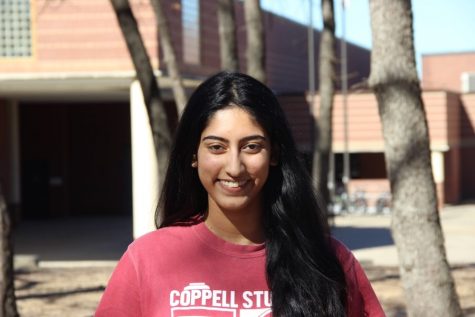
Junior, Briana Thomas, is a South Asian writer whose stories are unfiltered outlets that voice her passions, opinions and beliefs. Briana is intrigued...




